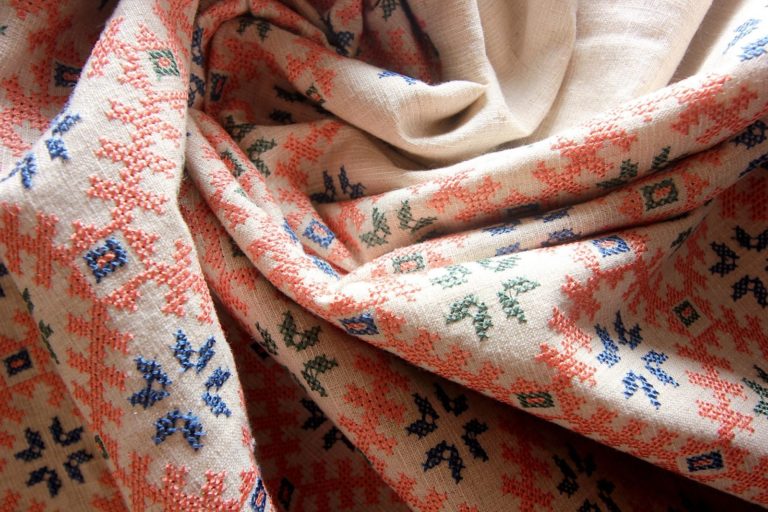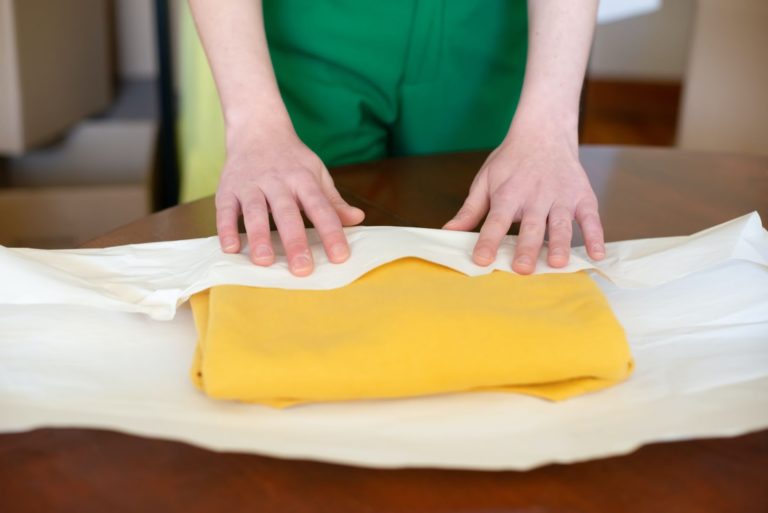Environmental Impact Of Fast Fashion: A Careful Analysis

Fast fashion is a phenomenon that has taken the world by storm. It’s cheap, accessible and appealing to millennials who want to look stylish without spending a lot of money on clothing.
Fast fashion is a type of clothing whereby new clothing collections are produced in response to current trends every season. This quick-response production speeds up the supply chain and gets the new garments into stores and online as fast as possible.
This article explores the environmental impact of fast fashion from its production to its disposal. We’ll explore what it is, why so many people love it, how it has changed the world of clothing, and its pros and cons from an environmental perspective.
By reading this article, you will have a better understanding of this topic so you can make an informed decision about your habits, or when advising others about theirs.
What is Fast Fashion?
The term “fast fashion” first appeared in the 1990s. It describes a process of creating new clothing collections that responds to trends every season. This is a marked departure from “slow fashion”, which is producing clothing collections that respond to trends that change every year or even every season.
Rapidly changing trends are detrimental to society. According to Sustain Your Style, only the oil business produces more pollution globally than the fashion industry. There is so little regard for human beings doing the hardest work that in 2013, 1,134 individuals lost their lives when a poorly built factory in Bangladesh collapsed.
Microfibers from our polyester clothing are among the many pollutants that will outnumber fish in the ocean by 2050. Although we know we shouldn’t, we keep on buying. Consumers are reportedly purchasing “five times more apparel now than they did in 1980,” according to an article in The Wall Street Journal.
The slow fashion process creates garments to last a long time. Fast fashion is cheap to make and can be made quickly. The clothes are made with lower-quality materials that don’t last as long as the materials in slow fashion garments.
Why People Love Fast Fashion
Fast fashion has become a billion-dollar industry. Customers love the low prices and the ability to buy trendy new garments when they want to change their look. Fast fashion is especially appealing to millennials.
They are the largest demographic of people who want to shop ethically, but they also have the lowest income. They need to buy clothing that’s cheap but fashionable. Fast fashion retailers like Zara and H&M offer customers the ability to buy new clothes when they want to change their style without spending a lot of money.
These retailers produce new clothing collections every season, so customers can always find something new. They can buy different styles each season because they are affordable to replace.
The Environmental Impact of Manufacturing Fast Fashion
- Use of excessive water: The fashion sector uses 10% of all industrial water to run plants and clean items. One kilogram of cotton requires 10,000 gallons of water or 3,000 liters for a garment. Dyeing fabrics with harmful chemicals pollute our waters. This procedure accumulates 20% of the world’s wastewater. As companies migrated overseas, they may be in nations lacking rigorous environmental restrictions, causing untreated water to enter the oceans. Unfortunately, the poisonous wastewater can’t be treated to be safe.
- Microfibre: Synthetic textiles cause microfibers to infiltrate our waters. 35% of microplastics are synthetic. To cut costs, manufacturers use low-quality materials. Many fibers are made of polyester, a material that emits more carbon than cotton. Plastic degrades slowly in the ocean, taking years. Plastic decomposes into a poisonous chemical that harms marine habitats. Plastic microfibers end up in the human food chain through aquatic life, creating several health problems. Washing machines are the most prevalent way they enter the water. The washing machine is an essential household device, but it’s crucial to wash full loads to save water.
- Overuse of clothes: Because clothes are affordable and new trends encourage people to buy more, their worth may decrease. As of 2019, global garment consumption was 62 million metric tonnes. Consumption in recent decades has risen. Although it may help our economy, more goods wind up in landfills since lower-quality clothes wear out after a few washes, requiring more new clothes. Garments in landfills and burned clothing are two major difficulties. Many people toss away outgrown or out-of-style garments instead of giving them. Due to the quantity of clothes cutouts, a lot of resources are wasted because they can’t be reused. 57% of abandoned clothes go to landfills, which are subsequently burnt. Burning landfill releases hazardous compounds and dangerous fumes, endangering public health and the environment in adjacent areas. Despite modern filters to absorb pollutants, they persist and are often transformed into harmful material that pollutes our air.
- Soil Pollution: Pollution of the soil threatens our ecology. Healthy soil is needed for food production and CO2 absorption. Global soil degradation is a major environmental issue. It threatens global food security and warms the planet. The fashion business degrades soil through overgrazing by cashmere goats and lambs, chemical use to grow cotton, and deforestation by rayon and other wood-based fibers.
- Greenhouse gas Emissions: 10% of worldwide carbon emissions come from the garment business. The energy used to produce, manufacture, and transport a million clothes annually generates a lot of greenhouse emissions. Most of our garments are manufactured from synthetic fibers (polyester, acrylic, nylon, etc.), which need more energy than natural fibers. Most of our garments are made in coal-powered China, Bangladesh, and India. This emits the most carbon. Also, cheap synthetic fibers release N2O, which is 300 times more toxic than CO2.
- Loss of Rainforest: Plantations of trees used to create wood-based fabrics like rayon, viscose, and modal are replacing thousands of hectares of endangered and old forests every year. In places like Indonesia, where massive deforestation of the rainforests has taken place over the past decade, this loss of forests poses a threat to the ecology and indigenous cultures.
The Problem With Discarding fast fashion
- The biggest problem with discarding garments made from synthetic materials is that they won’t biodegrade.
- The only way to get rid of them is to send them to a landfill. In a landfill, synthetic materials release a harmful greenhouse gas called methane.
- This gas is 23 times more damaging to the environment than carbon dioxide.
- The problem with discarding garments made from natural materials like cotton is that they’ll biodegrade in a landfill.
- This will create a lot of extra methane.
- There are a few ways to avoid creating a methane problem when discarding garments. One way is to donate the garments to charities that will send them to developing countries.
- Another way is to send the garments to a compost heap.
Working Conditions
Most of our clothes are created in countries with restricted or nonexistent worker rights. Production locations often move to find cheaper labor. We often hear firm owners say “it’s better than nothing” or “at least we gave them a job,” and they’re partly true. It’s also true that they exploit disadvantaged populations that have no choice but to work for any salary and in any conditions. Even the European Parliament calls garment workers in Asia “slaves”
Many designer brands say their workers are paid “at least the minimum wage.” How so?
In major industrial countries (China, Bangladesh, India), minimum pay is half to a fifth of a living wage. A living salary covers a family’s fundamental necessities (food, rent, healthcare, education, etc). These brands brag about paying their staff 5 times less than needed to live with dignity.
Companies will leave a country if labor conditions improve. If consumers don’t demand change, we can’t expect much from corporations or governments. Garment workers generally work 14-16 hours a day, 7 days a week.
During the high season, they may work until 2 or 3 am to meet deadlines. Their earnings are so low that they can’t refuse overtime, and many would be fired if they did. Some overtime isn’t paid.
160 million children labor worldwide. Fashion demands low-skilled labor, hence child labor is frequent. In South India, 100,000 girls work under the Sumangali system, which sends underprivileged girls to a textile mill for three or five years in exchange for a basic wage and a dowry payment at the end. Overworked girls live in horrific conditions that represent modern slavery.
Conclusion: How can we make the fashion industry less harmful to the environment?
- Spend Less: The manufacturing and shipping of even the most eco-friendly garment still affects the environment. The fact that we now buy 10 of everything whereas our grandmothers only bought 2 is symptomatic of a larger problem: our culture’s excessive consumerism. Many of us believe that treating ourselves to new threads can boost our mood. Maybe it’s time to reevaluate the very basics of our way of life.
- Spend on sustainable labels: The environmental and social impacts of clothing manufacture are increasingly being considered by major fashion houses. The Brands We Like is where you’ll find our recommendations for eco-friendly retailers. In the same way that it was difficult to get organic food 15 years ago, the availability of sustainable clothes will increase in proportion to the demand for it. It’s now sold in most grocery stores. Sustainable clothing may be more expensive than that found at a fast fashion store, but consumers now have a better understanding of the true cost of their purchases.
- Invest in high-quality products: We no longer value quality as high as we once did because of the low price of clothing. When the clothes we own become unattractive or unusable, we simply replace them. Additionally, we have all felt the chagrin of spending a lot of money on a trendy new outfit or pair of shoes only to see that they already appear worn out or have holes in them after only two months. To encourage manufacturers to enhance the quality of their garments, consumers should refrain from purchasing low-grade options. The extended lifespan of our clothing is a win for both our wallets and the planet.
- REFLECT CAREFULLY BEFORE DISPOSING OF YOUR GARMENTS:
- Instead of using regular trash cans, separate your clothing. Most of them are made of synthetic, nonbiodegradable material and will therefore be left in landfills indefinitely. You can also.
- You should make an effort to fix them. Ripped clothing can sometimes be repaired or redesigned with some creative thinking.
- Donate your old clothes to a local charity or give them to a friend, relative, or neighbor in need.
- Put them up for sale on resale websites and apps like Vinted.
- Shops that sell clothing often accept returns of previously worn items, including those not sold by the store.
- Get a bin for recycling textiles and toss them in there. Clothing can be remade using recycled textiles.






